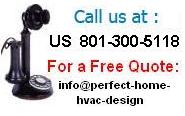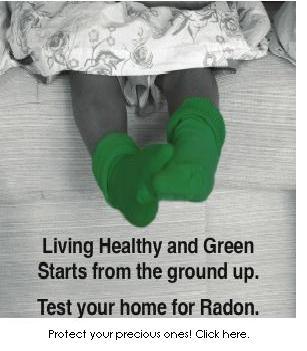|
In the days of old, 4 complete air changes per hour were common, just by natural infiltration. Furnaces and air conditioners were naturally oversized to compensate for the higher infiltration rates. Today's home must, ultimately, be designed and built with the intentions of installing some sort of mechanically induced ventilation system to improve indoor air quality.
Providing better ventilation is certainly a step in the right direction, but it is not a cure-all. We will discuss ventilation more extensively later on. Right now, let's look at some other types and sources of indoor air pollution. Most homes have more than just one source of indoor air pollution. Serious risk arises from the cumulative effects from a few to many indoor air pollutants.
Somes pollutants are released intermittently by activities of the occupants, such as paints, paint thinners and solvents used during remodeling. Always ventilate these areas well while these chemicals are in use. The use of cleaning products and pesticides during housecleaning, and smoking indoors, all add to the overall pollution present in a residence. Some other pollutants in the home are being released continuously from furnishings, building materials, and household products such as timed air fresheners. High concentrations of air pollutants, without ventilation or air cleaning of some sort, will remain in the air you breathe for long periods of time. Pollutants can, and will, accumulate to dangerous levels threatening health and comfort, if little or no outside air is introduced into the home. Therefore, homes which were built tight should be equipped with some mechanical method of introducing outside air into the home. Also, all homes and their occupants can benefit immensely from good air filtration. All forced-air furnaces or air handlers providing heating or cooling in a residence should have an integral filter. The standard 1" filter is certainly better than nothing, but barely. Today's filtration choices are limitless, and immensely improve indoor air quality. We will investigate some of these air cleaner/purifier choices further on.
Suggested steps (or strategies) for improvement of your home's indoor air quality.
Install a good air cleaner on each of your comfort systems. (Indoor air quality begins with a good air cleaner) Visit our Air Filtration and Air Cleaner page.
Install an Energy or a Heat Recovery Ventilator. Depending on the size of your residence, multiple units may be the ticket. Read more about Energy and Heat Recovery Ventilators.
Install a whole house mechanical ventilation system. Read more and see ventilation system examples.
Other Related Pages
Please feel free to link to this page from your website. This page's URL is: http://www.perfect-home-hvac-design.com/indoor-air-quality.html
|
| |||






















